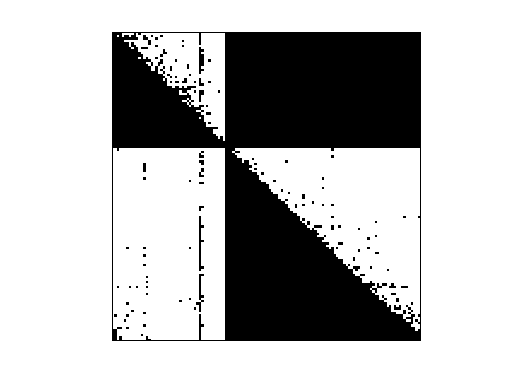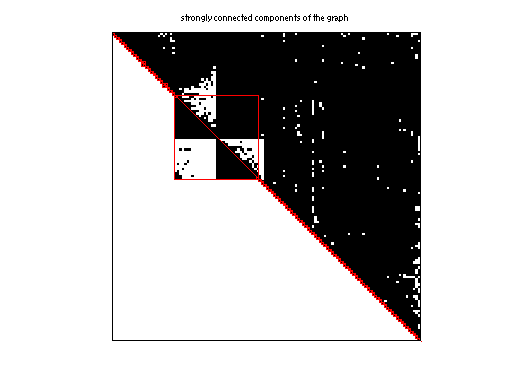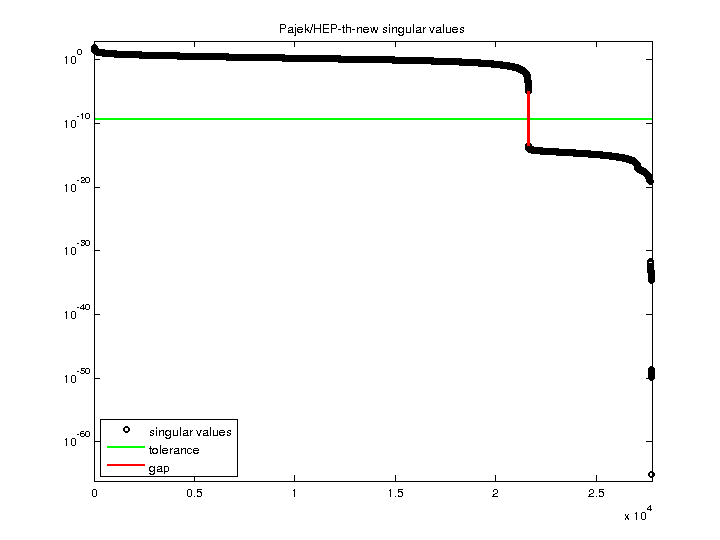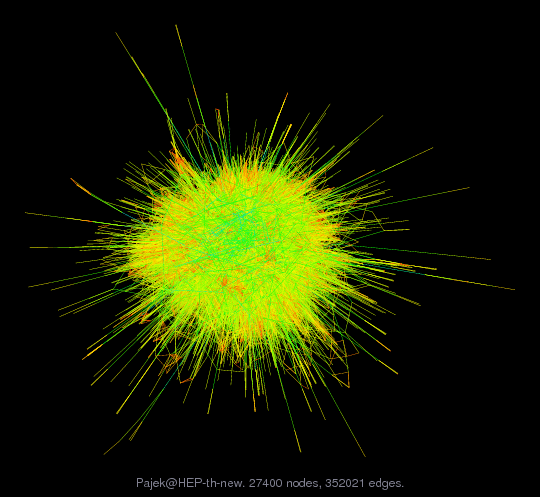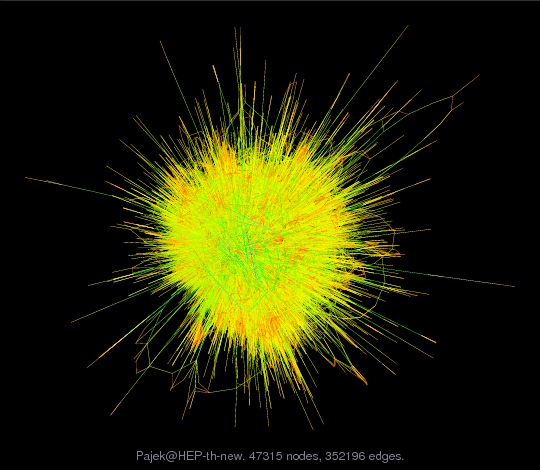Pajek/HEP-th-new
Pajek network: High Energy Physics literature
| Name |
HEP-th-new |
| Group |
Pajek |
| Matrix ID |
1503 |
|
Num Rows
|
27,770 |
|
Num Cols
|
27,770 |
|
Nonzeros
|
352,807 |
|
Pattern Entries
|
352,807 |
|
Kind
|
Directed Graph |
|
Symmetric
|
No |
|
Date
|
2003 |
|
Author
|
KDD Cup 2003 |
|
Editor
|
V. Batagelj |
| Structural Rank |
|
| Structural Rank Full |
|
|
Num Dmperm Blocks
|
|
|
Strongly Connect Components
|
20,086 |
|
Num Explicit Zeros
|
0 |
|
Pattern Symmetry
|
0.3% |
|
Numeric Symmetry
|
0.3% |
|
Cholesky Candidate
|
no |
|
Positive Definite
|
no |
|
Type
|
binary |
| SVD Statistics |
| Matrix Norm |
8.516069e+01 |
| Minimum Singular Value |
6.734437e-66 |
| Condition Number |
1.264555e+67
|
| Rank |
21,616 |
| sprank(A)-rank(A) |
|
| Null Space Dimension |
6,154 |
| Full Numerical Rank? |
no |
| Download Singular Values |
MATLAB
|
| Download |
MATLAB
Rutherford Boeing
Matrix Market
|
| Notes |
------------------------------------------------------------------------------
Pajek network converted to sparse adjacency matrix for inclusion in UF sparse
matrix collection, Tim Davis. For Pajek datasets, See V. Batagelj & A. Mrvar,
http://vlado.fmf.uni-lj.si/pub/networks/data/.
------------------------------------------------------------------------------
High Energy Particle Physics (HEP) literature with May 12, 2003 Update
----------------------------------------------------------------------
Citation data from KDD Cup 2003, a knowledge discovery and data mining
competition held in conjunction with the Ninth Annual ACM SIGKDD Conference.
http://www.cs.cornell.edu/projects/kddcup/index.html
The Stanford Linear Accelerator Center SPIRES-HEP database has been
comprehensively cataloguing the High Energy Particle Physics (HEP) literature
online since 1974, and indexes more than 500,000 high-energy physics related
articles including their full citation tree.
The network contains a citation graph of the hep-th portion of the arXiv.
The units names are the arXiv IDs of papers; the relation is X cites Y .
Note that revised papers may have updated citations. As such, citations may
refer to future papers, i.e. a paper may cite another paper that was publishe
after the first paper.
transformed in Pajek format: V. Batagelj, 26. July 2003
year:
The SLAC/SPIRES dates for all hep-th papers are given. Some older papers were
uploaded years after their intial publication and the arXiv submission date
from the abstracts may not correspond to the publication date. An alternative
date has been provided from SLAC/SPIRES that may be a better estimate
for the initial publication of these old papers.
The vector contains the year in SLAC date of each paper.
date:
SLAC date of paper was transformed to the number of days since August 1, 1991
|
